Mysteries have captured the interest of many people. Treasure hunters, historians and the entertainment industry. There are conspiracies and theories about what happened to some of the world's biggest mysteries. However, that's all they are. Conspiracies and theories. These are unsolved mysteries.
The amber room
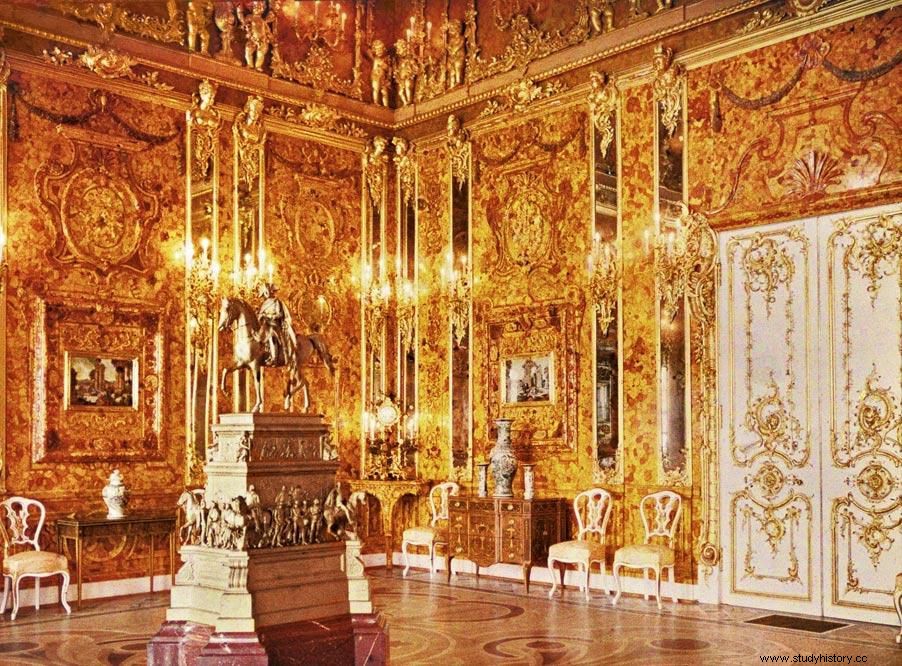
Amber Room was a golden room with jewels.
Construction began in 1701, with several tons of amber gemstones used. This was an international collaboration:designed by the German baroque sculptor, Andreas Schlüter, and constructed by the Danish amber craftsman Gottfried Wolfram.
Using amber was new and unheard of. The Baltics, known as the 'Gold of the North', and fossilized in wood resin, had the largest deposit.
Schlüter and Wolfram found new ways to work with amber. First heated and dipped in an infusion of flaxseed and honey. They are then processed on wood panels covered with either gold or silver leaves. Finally, decorated with precious jewels.
Originally, the site was Charlottenburg Palace, home of the first King of Prussia, Friedrich I. Upon completion, the room was admired by Peter the Great of Russia.
In 1716, Fredrick William I (then King of Prussia) gave the Amber Room to Peter the Great. This marked a Prussian-Russian allegiance to Sweden.
Sent to Russia in 18 boxes and re-constructed in the Winter House in St. Petersburg, it became part of the European Art Collection.
In 1755, Czarina Elizabeth ordered the room to be moved to Catherine Palace in Pushkin, known as Tsarkoje Selo ('Czar's Village'). Italian designer, Francesco Bartolomeo Rastrelli, redesigned the room to fit the new, larger room. In addition, more amber was sent from Berlin.
The Amber Room, called "the eighth wonder of the world", was one of Russia's most valuable objects. It remained so throughout the 18th and 19th centuries, and even survived the Russian Revolution of 1917.
The events of World War II led to the Amber Room being one of the greatest unsolved mysteries.
The Nazi Invasion
On June 22, 1941, Adolf Hitler started Operation Barbarossa. Three million German soldiers were shot into the Soviet Union. Their mission resulted in the looting of tens of thousands of Russian art treasures.
The German forces now in Pushkin, officials and curators tried to dismantle and hide the Amber Room.
Anatoly Kuchumov, chief curator, led the dismantling of the Amber Room. It was to travel east. However, he discovered that the yellow panels became brittle over time. An attempt at removal increased the damage. He suggested hiding the room with a thin layer of wallpaper. Unfortunately, the Nazis found it.
Hitler was aware of the history of the Amber Room. As a German-made object, he wanted it to be returned to his homeland, his compatriots liked. The Nazis were fully aware of what to look for.
The German soldiers tore down the room within 36 hours. Packed in 27 boxes, shipped to Königburg (now Kaliningrad), Germany, and re-installed in the Königburg Castle Museum.
Alfred Rohole, museum curator and amber expert, studied the room's panel history. At the end of 1943, he gave advice on dismantling the Amber Room and placing it in boxes.
A prediction of the coming events from August 1944 to 1945 was behind the dismantling. The Royal Air Force heavily bombed Königburg, including its historic quarters. The city was destroyed. After the bombing, artillery fire rained down on the city as the Soviets advanced.
The museum in ruins, the Red Army marched into the city. However, the path to the Amber Room was lost and never found.
The conspiracies
The basic theory is that the bombings in 1944 destroyed the boxes. Some people think it is hidden in Königburg. Others say it is still in crates, but at the bottom of the Baltic Sea.
Besides, it's an extreme theory. Joseph Stalin had the Amber Room and the Germans stole a fake.
All theories are still under speculation.
The Curse
'Amber Room Curse'.
People connected to the room met untimely ends.
Rohole and his wife first died of typhus while the KGB investigated the room.
Second, General Gusev died of Russian intelligence in a car accident after talking to a journalist about the Amber Room.
Third, Georg Stein, an Amber Room hunter and former German soldier, murdered in a Bavarian forest in 1987.
New yellow room
At Tsarkoje Selo , construction of a new Amber Room began in 1979 and was completed 25 years later.
A new miracle dedicated to Russian President Vladimir Putin and then-German Chancellor Gerhard Schröder. All in all, it marked the 300th anniversary of St. Petersburg. In addition, there was a unifying ceremony for the peaceful atmosphere behind the original Amber Room.
The new amber room will be shown to the public at Tsarkoje Selo State Museum Reserve.
Sarcophagus of Menkaure
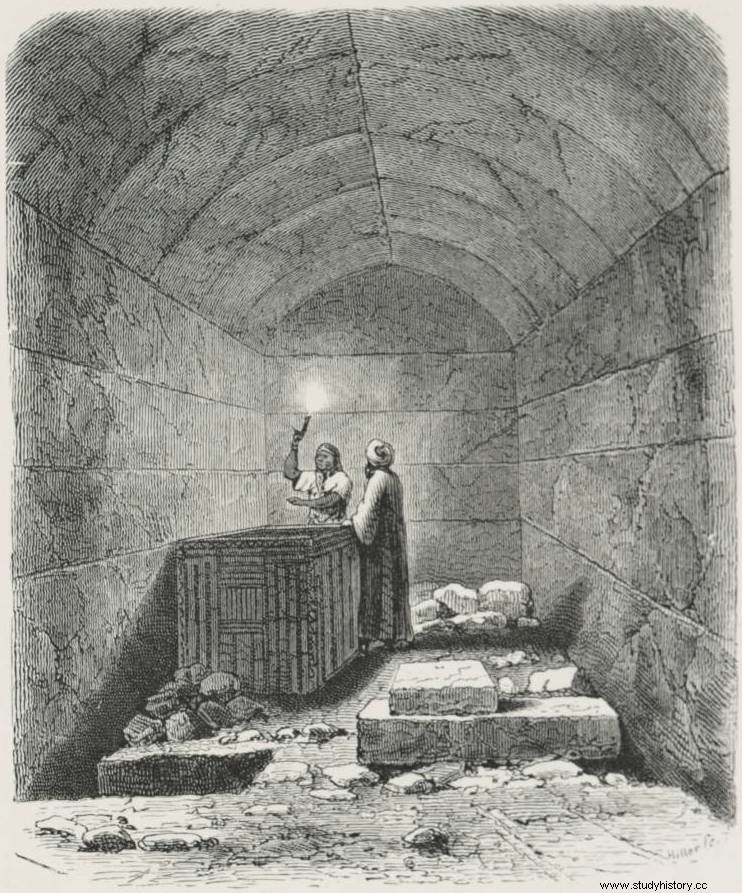
The Pyramids of Giza are three pyramids, each for a pharaoh. The largest is to Pharaoh Khufu. The second largest to Pharaoh Khafre. The smallest to Pharaoh Menkaure.
Pharaoh Menkaure
The grandson of Pharaoh Khufu and the son of Pharaoh Khafre, he ruled Egypt in the fourth dynasty of the ancient kingdom (4 years ago).
As a righteous and pious leader, he opened temples that were once closed during his grandfather's reign. In addition, he gave the population more time for his own work instead of showing complete devotion to him.
However, it was a darker side. Rumor has it that he is the cause of his daughter's suicide. After the daughter's death, an oracle predicted that he would live for only six more years. He had several lamps lit when the sun went down, where he drank and sought entertainment. By turning nights into days, he wanted to extend his reign by more than six years.
Find sarcophagi
In 1837, Richard Willian Howard Vyse, a British adventurer, discovered the sarcophagus. His method was extreme but effective. Blasting holes in the pyramid. After excavation, a basalt sarcophagus of three tons was found, with elaborate decorations (facade motifs). It was blue, brown, with pieces cut off.
It was the first time decorations were seen. Previous monuments of Menkaure showed no carved decoration. The lid of the sarcophagus was broken open, revealing no remains. The lid was on the upper level of the pyramid, near a wooden chest with Menkaure's cartouche (signature).
Inside the coffin were not Menkaure's remains, but the bones of a 2-year-old person. Through radiocarbon tests, not only were the remains not the pharaoh's, but the lid on the coffin did not match Menkaure's timeline.
Menkaure's remains are undiscovered. This is also one of many mysteries that go further.
Sarcophagus
Vyse wanted to save the sarcophagus from further damage to the pyramid. No details were taken about the operation, but significant efforts were made to remove the sarcophagus.
Placed on an English merchant ship, Beatrice , it sailed from Alexandria in September 1838. The next destination was Malta. Finally, Beatrice was to sail to Liverpool, England. There the sarcophagus would be studied and displayed at the British Museum in England.
However, on October 13, 1838, Beatrice became met a storm. Ultimately, lost at sea before reaching Liverpool, the ship in the Mediterranean.
The exact location of Beatrice sank is unknown. Therefore, the search is still difficult. Even the surviving crew was unsure of the site.
In 2008, Egyptian authorities called Robert Ballard, known for discovering the RMS Titanic, to lead the search. Due to political problems in Egypt, the search was unfortunately curtailed.
Furthermore, there is concern about ownership of the sarcophagus if it is found. It was an Egyptian artifact, aboard a British ship, which sank Spanish waters.
In a positive way, the sarcophagus is made of basalt, which makes it impermeable to seawater.
Ark of the Covenant
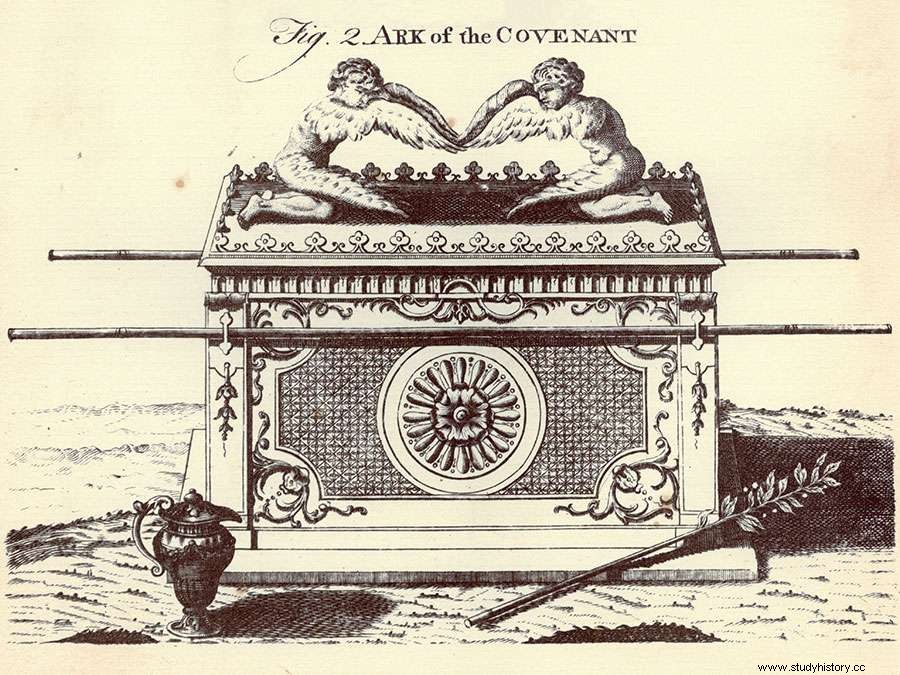
The ark was built about 3 years ago by the Israelites, and is an elaborate, gilded box. Approximately the size of a sailor's coffin, made of gold-plated wood and topped with two large golden angels. It was carried by two poles inserted through the rings on each side.
The art contains two stone tablets with the Ten Commandments.
After fleeing Egypt, Moses led the Israelites to Mount Sinai, where his first encounter with God took place. He left the camp for 40 days and nights in the mountains. Not only did he receive the traditional idea of the commandments, but the constitution of the nation of Israel.
The tablets are divided into two sets. The first five commandments are elements of the worship of the God of Israel. The second concerns human behavior as a nation.
etymology
Sheets come from the Latin word arca , which means 'breast'.
The term refers to a lifeboat in three ways:
- Noah's ark,
- The basket that floated down the Nile with the infant Moses, and
- The box containing the Ten Commandments.
Philistine invasion
During the Bronze Age, the Philistines invaded and defeated the Israelites several times. The ark, used in battle, was protection against the enemy. However, it was captured by the Philistines and taken to the temple of their supreme god, Dagon.
As triumphant as this may seem, there were problems for the Philistines:
- Every morning, on the ground in front of the ark, was the statue of Dagon.
- Infections came out of tumors and boils.
- A mouse injury ruined their grains.
Eventually, they returned the ark to the Israelites.
The Babylonian Empire
Between 597 and 568 BC. the Babylonian Empire conquered the Israelites.
At this point, the ark, apparently in the temple of Jerusalem, disappeared. It is unknown if it was destroyed, trapped or hidden.
Allegations
First, the ark found its way to Ethiopia, in Aksum, in St. Mary of Zion Cathedral. Church officials say only the guardian of the ark is the only one allowed to see it. Since no one is allowed inside, it cannot be authenticated.
Second, the ark is hidden in a network of tunnels under Jerusalem's first temple. The site is now home to the Dome of the Rock, sacred to Islam. Therefore, it goes untried.
To date, there are no concrete claims or evidence of where the ark may be.
Honjō Masamune
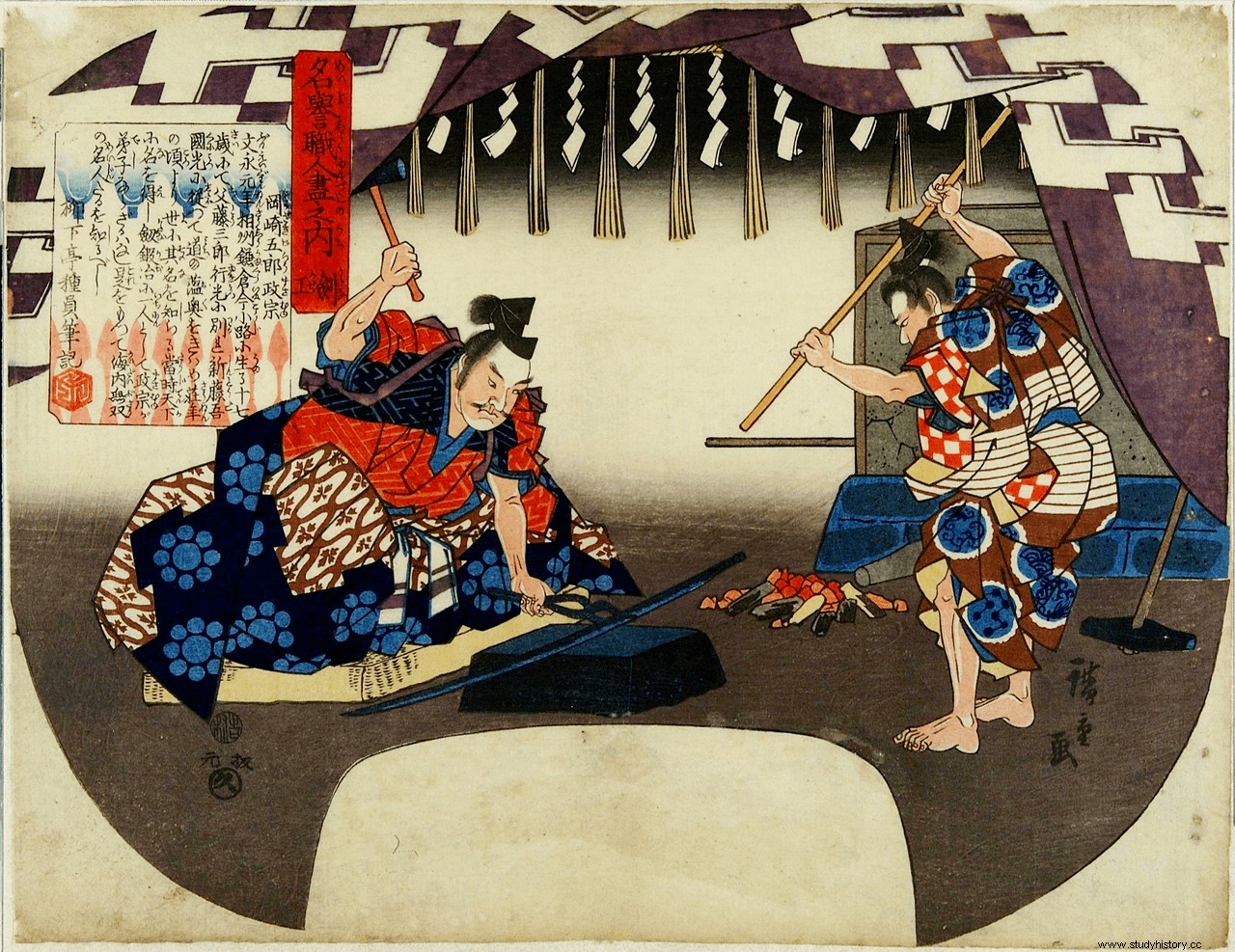
A sword forged by the famous Japanese blacksmith, Gorō Nyūdō Masamune. It is one of the most famous swords in Japanese history, one of the country's national treasures.
Masamune (正宗)
He makes swords from the end of the 13th century to the beginning of the 14th century, and is one of Japan's greatest swordsmen. He studied under Shintogo Kunimitsu and mastered the technique of Soshu sword making.
As his masterful sword production became prominent, so did the samurai.
He discovered a way to make weapons exclusively from silver, which improves strength and flexibility. Metal brought to high temperatures resulted in no impurities. However, high temperatures made the swords crazy. To combat this, he mixed soft and hard steels in layers, giving the leaves a unique wavy pattern. It was able to penetrate the enemy armor quickly and easily. The lightweight design allowed warriors to use swords while on horseback. This was a technique ahead of its time in the whole world.
As a 23-year-old, Emperor Fushimi proclaimed him his most important swordsmith.
Honjō Masamune
It is named after the first prominent general who owned it, Honjō Shigenaga. He led his troops into battle at KawaNakajima in 1561 and won the battle. He kept the sword and then sold it to the Toyotomi clan in the 16th century. After the fall of the clan, the sword went down to Tokugawa Shogunate.
This weapon was a sword of power and respected as such by controlling the Shoguns. For 700 years, it passed from generation to generation, shogun to shogun.
Towards the end of World War II, Tokugawa had Iemasa Honjō Masamune.
Japan surrendered. The Allied forces demanded that all Japanese noble families hand over all weapons, including swords. The nobles were furious. It was painful to hand over a family legacy. In addition, there was humiliation in handing over valuable swords to the Americans.
To set a good example and be the voice of reason, Tokugawam Iemasa handed over the family's sword collection. This included Honjō Masamune.
Honjō Masamune sailed across the Pacific Ocean in a ship and was lost shortly after.
There is speculation about what happened, but like all mysteries, there is no concrete evidence.
The Crown Jewels of Ireland
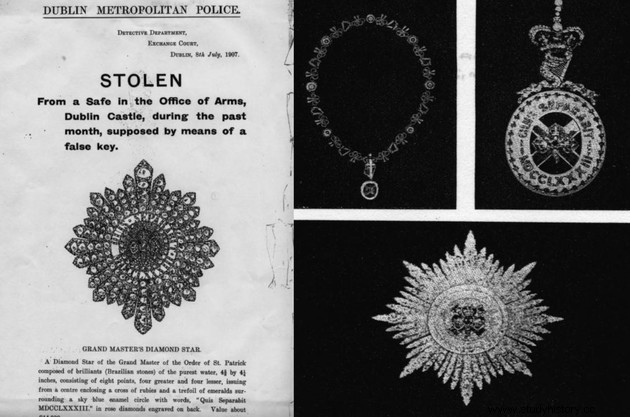
These jewels, unrelated to the royal family, belonged to the Order of St. Patrick, an elite order founded in 1783.
They consist of:
- a star decorated with Brazilian diamonds. The center of the star was an emerald trefoil and a ruby cross on a blue enamel background,
- five gold, jewelery with collar and
- a diamond mark.
A total of 394 jewels, worn by the Grand Master of the Order. The Grand Master acts as the Viceroy and Representative of British Power in Ireland.
Stored at Dublin Castle, Ulster King of Arms and his staff guarded the jewels. In addition, there was a 24-hour outdoor patrol of police and soldiers.
In 1903, a safe was installed at the castle. After it was built and the jewels placed inside, it was discovered that the safe was too large to fit through the doorway. Therefore, it remained outside the strong room and inside the library in Belford Tower.
Seven lock keys opened the safe room, kept by members of the security staff. Two keys, on the other hand, were kept by Sir Arthur Vicars, Ulster King of Arms. He carried one on his person and locked the other in the home table.
Given the importance of the jewels, however, priests were relaxing the security. On a drunken night, he gave the keys to a friend, and picked up the next morning with the jewels. Another story is that he left one of the keys attached to the office keys, a mistake discovered by a maid.
The jewels disappeared
On July 6, 1907, a cleaning lady assigned to the Belford Tower discovered that the safe was open. Not only that, with the inner security door bolted, the keys to the library were left in the locks.
In the beginning, temps remained unarmed. When you sent a messenger to the library, the safe revealed to be empty. The Irish crown jewels disappeared.
The jewels probably ended up in pieces, sold individually to wealthy collectors. Nevertheless, the alternative theory is that they are hidden.
State suspect
The first was Sir Arthur Vicars, who denied committing the crime until his death. Consequently, he lost his position as Ulster King of Arms.
The other was Pierce O'Malley, Vicars' assistant, who was found not guilty.
The third was Francis Shackleton, Deputy Commander-in-Chief. He was the main suspect right after the temps, believed to be the true culprit.
the conclusion
Mysteries allow the world to discover history. The untold stories of untold mysteries bring an element of spontaneity to what we know. By uncovering the truth, we learn more about the world in a different light. Even if some remain unsolved, it makes one wonder how many more mysteries there are. Greater emphasis on the unpredictability of history.
"Discovery consists of seeing what everyone has seen and thinking what no one has believed."
-Albert Szent-Györgyi, Researcher speculates , ed. Irving Bra.
